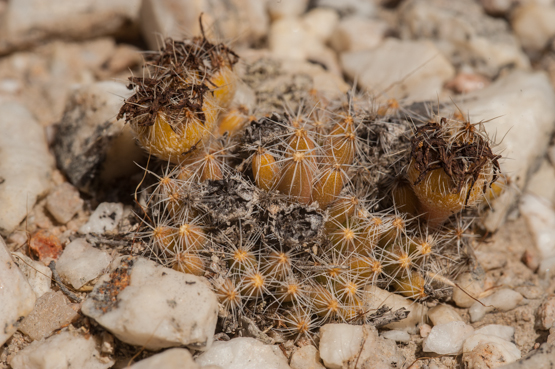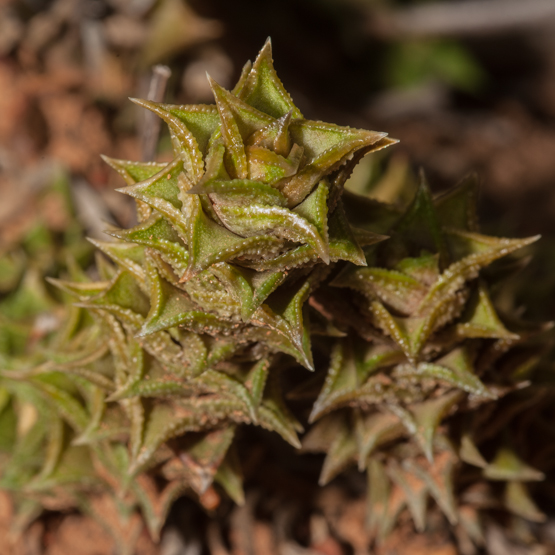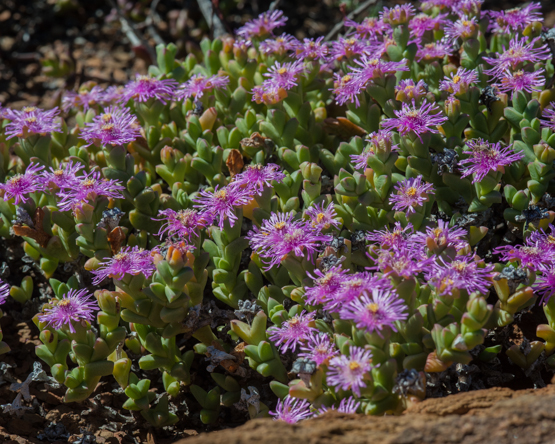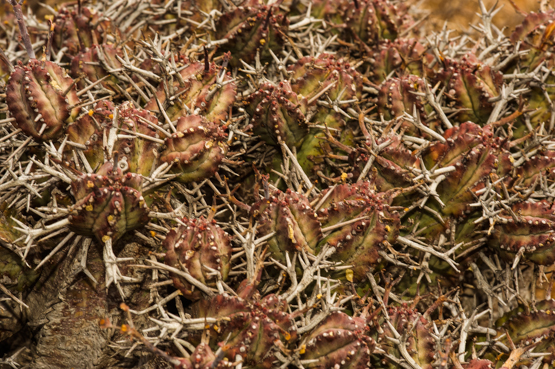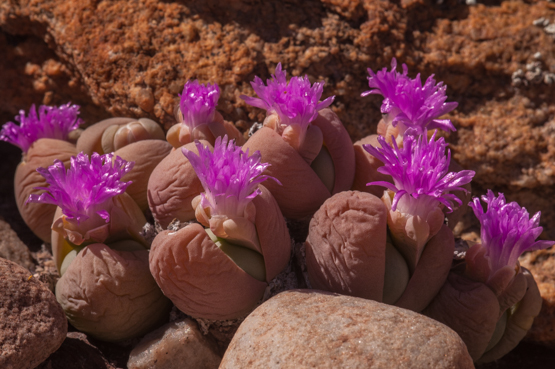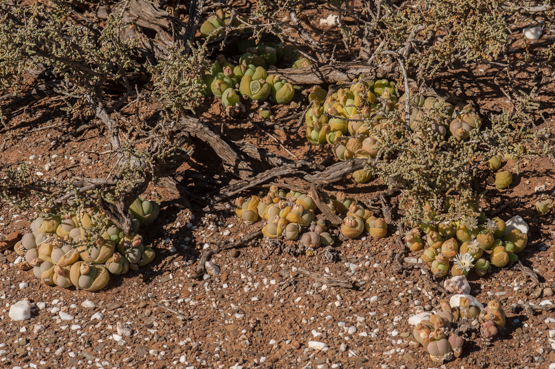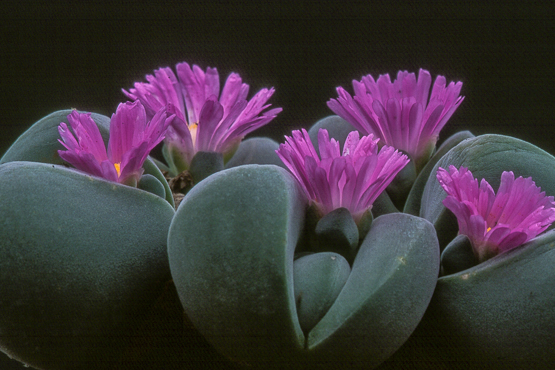It is easy to see why this species is so popular in cultivation. The plants are compact (the most compact of the whole genus) and have thick fleshy roots.
The diadems at the tips of the leaves are the largest of all Trichodiademas and the flowers (appearing in winter and spring: June- October) are 4-5 cm in diameter.
One can come across the plants from Uniondale to Willowmore and the southern Great Karoo, where they mainly grow in white quartz fields.
The last picture shows a plant in cultivation (scan from slide)

